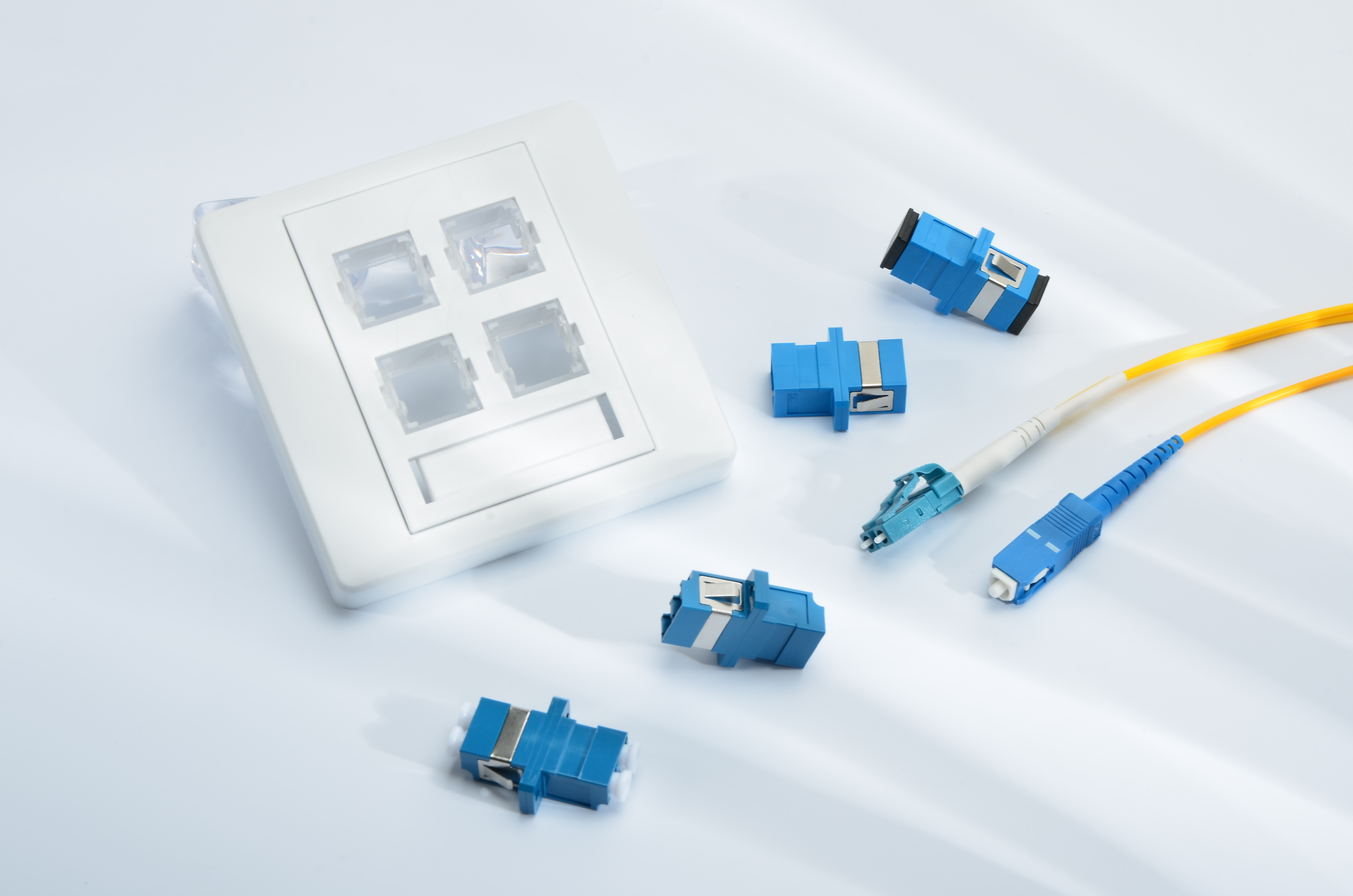Did you notice the square object with jacks installed on the wall before? It is often called as wall plate. There is a variety of wall plates used in everyday life. Almost every room will have one to enable convenient cable deployment inside buildings and houses. As for FTTx applications, fiber optic wall plate is an indispensable component to keep fiber optic link away from dust and damage. This article will mainly give some details about fiber optic wall plate.

First, let’s get to know more about the basics of wall plate. Wall plate, also called as wall outlet, workstation outlet or station outlet, is a flat plastic or metal plate that usually mounts in or on a wall (sometimes may be mounted in floors or ceilings). A wall plate has one or more jacks. A jack refers to the connector outlet employed for physical and electrical connection to the network cabling system. According to different networks, wall plates is divided into two types as fiber optic wall plates and copper wall plates. Since optical network has been leading the world trend, today we will get to know more about fiber optic wall plates.
Fiber optic wall plate is designed to establish the connection between two fibers. Based on different adapters, fibers, port counts and port orientations, fiber optic wall plates have many classifications.
There are typically four types of fiber optic connectors used in optical network, therefore the fiber optic adapters installed on the fiber optic wall plates are also different. LC, SC, FC and ST adapters are the common types. When you need to find a matching fiber optic wall plate, just check your fiber connector to see if it is the same type as the wall plate.

As for port count of the fiber optic wall plate, a typical wall plate holds up to four ports. For individual homes, sing-port type is mostly used for FTTH network. But for the office buildings, multi-port type is required for FTTD applications. In addition, if other ports are aimed for different applications, the ports can be made as hybrid ports with mixed types of adapters.

Port orientation is another way to divide fiber optic wall plates. Using the right orientations can provide fiber links better protection under different environment. Three common types of port orientations are straight, box-shaped and angled.

Fiber optic cables are made of different types of fibers. In order to satisfy the demands for all kinds of fiber cable deployment, fiber optic wall plates are also distinguished by single-mode fibers of OS2, and multimode fibers of OM1, OM2, OM3 and OM4. Moreover, single-mode fiber optic wall plate is used for most FTTx projects.
As a reference, here are the recommended steps for installing box-shaped wall plates on the wall:
- Step 1, determine the location of the new cabling wall plate. Use a pencil to mark a line indicating the location for the top of the wall plate.
- Step 2, use the hole template to trace the outline of the hole to be cut onto the wall with a pencil. Keep the top of the hole aligned with the mark made in step 1.
- Step 3, follow the lines and use a drywall keyhole saw to cut out a hole.
- Step 4, insert the wall plate into the hole. If it won’t fit in, trim the sides of the hole with a razor blade or utility knife.
- Step 5, secure the wall plate by screwing the box to the drywall or by using the friction tabs.
Fiber optic wall plate is an important part for FTTx applications. Selecting the right one from so many types of wall plates is also a task. All the aspects for your project should be taken into consideration. FS.COM is a place where you can find different types of fiber optic wall plates. You are welcome to get more detailed information in there.
